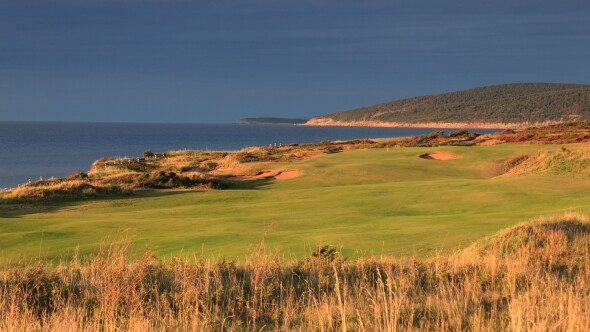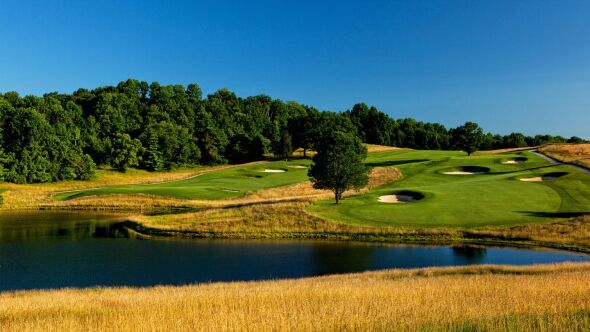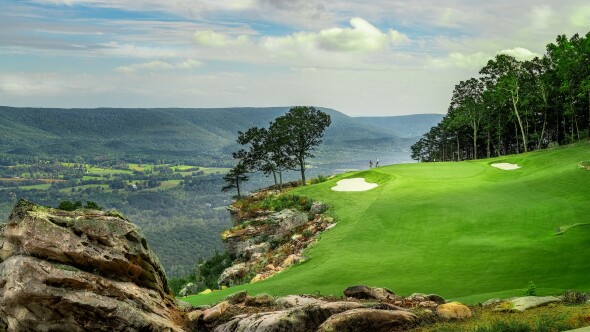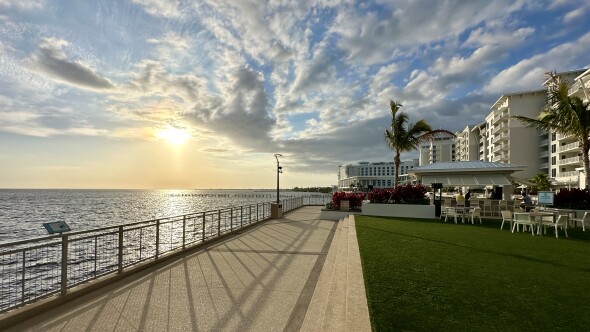It’s not worth it. The risk/reward ratio is just too high. If there’s any chance of electrical activity in the air, get off the course quickly and stay sheltered until the all-clear sounds.
We saw this weekend at the Tour Championship that even when precaution is taken, disaster is not far off. During Saturday’s third round of the PGA Tour’s FedEx Cup finale at East Lake Golf Club in Atlanta, a half hour after play had been suspended and the course cleared, lightning struck a pine tree by the 16th green and injured six passers by who got hit by debris from the blasted tree. It could have been much worse. None of the injuries was life threatening because none of them was from the lightning itself.

That wasn’t the case back in 1991 at the U.S. Open at Hazeltine National Golf Club in Chaska, Minn. An intense thunderstorm broke over the course during the first round, and while play was suspended and players cleared, spectators had less chance to hide from the storm. A strike by the 11th tee hit six fans, one of them, fatally - 27-year old William Fadell. Since then the USGA and the PGATour have been more attentive, not just to watching for thunderstorms but also to providing areas for safe evacuation.
Worldwide, about 250,000 people are injured annually from lightning; one tenth of them fatally. Countries with poorly developed shelters, metal-roofed housing and primarily agricultural are far more vulnerable. Outdoor exposure increases susceptibility, with golf, fishing and hunting among the most exposed activities. Research suggests that the U.S. sees about 50 lightning fatalities a year.
What happens when golfers are caught out on the course without a clear warning to evacuate was brought home at the PGA Tour’s Western Open in 1975 at Butler National Golf Club in Oak Brook, Ill. That’s when five professional golfers were struck: Jim Ahern, Jerry Heard, Tony Jacklin, Bobby Nichols and Lee Trevino, They were lucky to survive, though in some cases the injuries were career threatening if not career ending.
Today, most golf courses are equipped with lightning detection or early warning predictive technology that allows course officials to call off play if there’s activity in the area. An alarm will sound, clearly audible across the golf course. Simply translated, it means get the heck out of the way and stay there until the all-clear sounds.
Trail warnings
That’s the policy at all eleven sites of the Robert Trent Jones Golf Trail in Alabama. When it comes to moving people on and off a course, few entities have the experience of the management firm, Sun Belt Golf Corp. that runs the statewide operation. Annually, they handle over 500,000 rounds in one of the country’s most storm-volatile areas, known for both tornadoes and thunderstorms, sometimes simultaneously.
As explained by company Sun Belt Golf president John Cannon, all eleven sites have comprehensive lightning detection and prediction technology covering areas that range from eight to ten miles away. The variance depends upon site size as well as local topography.
“It’s an automated warning system,” says Cannon. “One long warning to clear the course and three short ones when it’s okay to go back.”
Today’s early warning lightning systems are so sensitive that sometimes the alarm will go out before a strike materializes within range, and often before a golfer sees evidence of a strike, That’s especially the case with big, multi-course facilities like the RTJ Trail has, where ten of the sites have at least 36 holes and the largest, the 54-hole Capitol Hill in Prattville, spreads across more than a square mile.
“We clear the course,” says Cannon. “We make it clear to players before they start that they are required to come in. We don’t want them out there, not even in rest rooms or rain shelters.
"If they don’t come we also tell them we are not going to go out and get them because we are not going to put our own employees in harm’s way.”
Players awaiting the all clear can get antsy, especially because they are required to wait a half hour after the last strike is detected before they are allowed out again. If they don't get to complete their rounds that day because of lingering storms, Sun Belt Golf offers all golfers rain check on the unused proportion of the round left unplayed. They can also trade that in for pro shop credit.
Of course some people just don’t care. Back at the Robert Trent Jones Trail, Cannon recalls an incident with a golfer who was determined to head back out onto the course to complete his round despite the absence of an all-clear. “I’m not worried about lightning ” he told Cannon. “I’ve already been hit three times.”
That golfer has a ways to go, as it turns out. The world’s record is seven.












You offer really good advice. But I believe that for the non VIP spectators at a PGA event it is all wishful thinking. The last three PGA tour tournaments that I have attended it involved parking my car many mikes away from the course, taking a free shuttle bus to the course entrance, walking a long distance to my selected viewing hole. As a regular spectator, when the alarm goes off there is really no place to go. You cannot go to the clubhouse where the members and players go. The VIP tents and buildings do not, despite what the Tour says, welcome in folks without the proper credentials. So you are left to head back to the main entrance where there will not be enough buses to take the masses back to the parking lots to sit in their automobiles. So don’t blame the general fans for having no place to go to escape the danger of lightning.
I have been told at a couple of courses in Wisconsin that there will NOT be a horn or notification in the event of lightning. I believe there is some sort of legal reason. Sounds pretty stupid!
I have been to a few PGA Tour tournaments, and it's obvious there is nowhere safe to go for regular spectators when play is suspended because of potential lightning. We don't have access to the clubhouse and those corporate tents are off-limits. The best solution seems to be to try to hide in denser woods in a lower-lying area.
The horn is sounded to clear player and caddies from the course and warn spectators to get ready to be struck by lightning...
I was caddying at Tedesco CC in Marblehead, Ma. in 1966. The loop I had that day was the businessman,
Mr. G K. On the 6th hole (248 yds uphill par 4, Mr. G.K. asked for a 6 iron to lay up. As he finished his practice swing, his club was hit by lightning, & the club went flyin’. Back then there were no shelters. All 8 of us (foursome) sheltered under a tree.🤷🏽♂️ Mr. G K was not injured, but it was a scare for all of us. We continued the round & the sun came out.
It was near the 16th tee. I was on #6 green where Rory and Xander were.. a half mile away. It felt like it was right on top of me. The issue is how do you get thousands of spectators out of harms way. Nobody told us to leave or evacuate. We are lucky no one was killed!
East Lake lightning strike was along the 16th tee area (just ahead of the tee being used for the tournament), not 5th hole as you state. Lightning also struck a maintenance facility as well.
This very incident has been worried about and considered at every golf tournament I’ve worked. I’ve been a marshal at the Wells Fargo Championship for 14 years and 2 PGA Championships. We always prepare to move golfers and caddies out of harms way, but the other 30,000 to 50,000 patrons who are there are never considered. Thank God for no serious injuries but death was a real possibility. I hope this close call will force the PGA to plan where patrons will go, give patrons explicit instructions when they buy their tickets. The tournament sponsors are responsible for All the people on the course, not just the players.